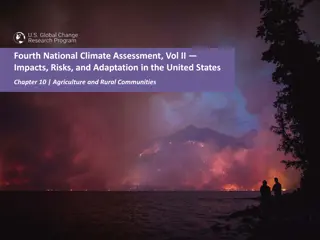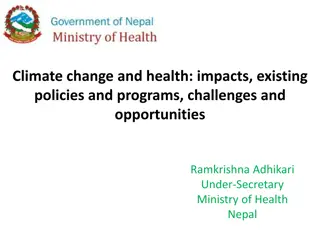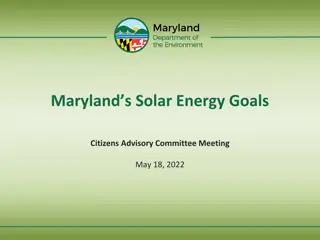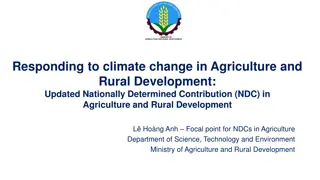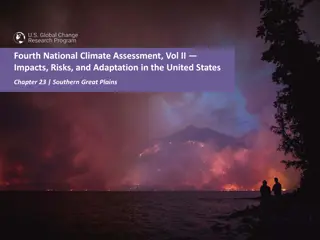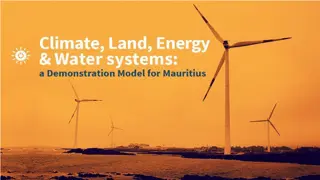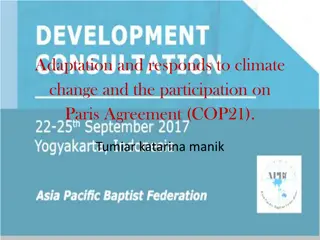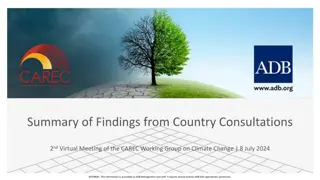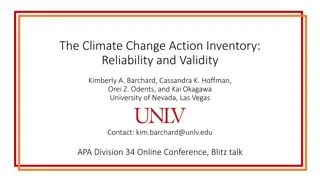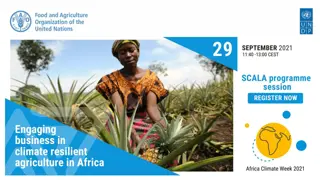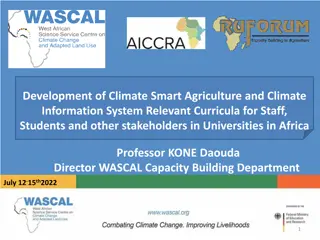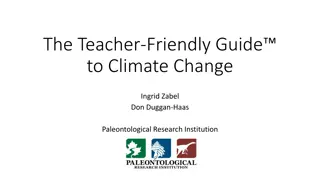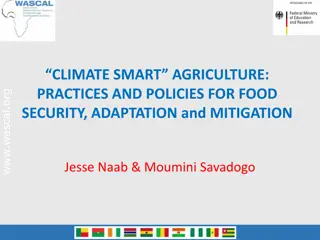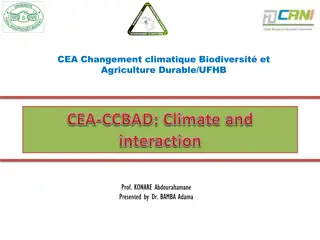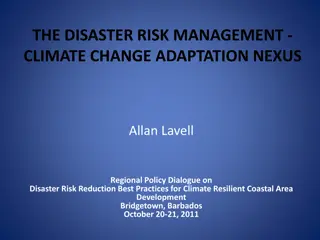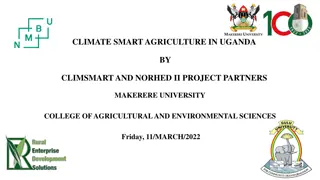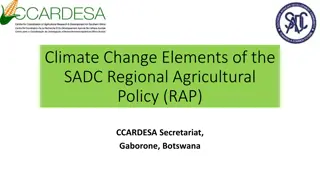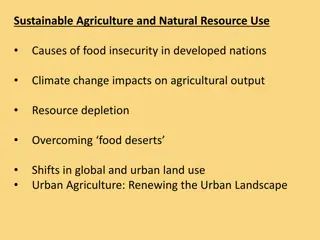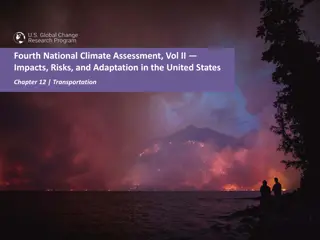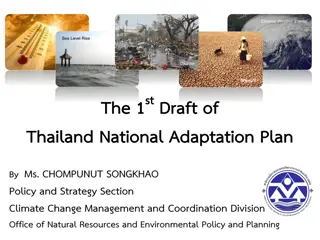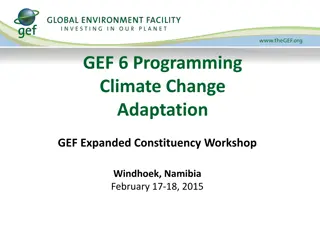Climate Change Impacts on Agriculture: Challenges and Solutions
Climate change is affecting agriculture through various factors like temperature changes, pest pressures, and precipitation alterations, impacting crop development and yield. These effects transcend individual agro-ecosystems, impacting soil resources and leading to soil erosion. Changes in production practices and temperature are influencing crop types, planting dates, and tillage practices, potentially leading to increased soil erosion. Sustainable management practices are crucial to mitigate these impacts and ensure food security in the face of a changing climate.
Download Presentation

Please find below an Image/Link to download the presentation.
The content on the website is provided AS IS for your information and personal use only. It may not be sold, licensed, or shared on other websites without obtaining consent from the author. Download presentation by click this link. If you encounter any issues during the download, it is possible that the publisher has removed the file from their server.
E N D
Presentation Transcript
Climate Change Impacts on Agriculture Healthy Eating in Context: Communicating for Change & Sustainability 3/21/14 Gwendelyn Geidel, PhD, JD
Crop Susceptibility to Climate Change 1) Abiotic effects - Crop development and yield impacted by (exp): temperature changes 2) Biotic effects - impact agricultural productivity (exp) : pest pressures availability of pollination services precipitation changes
Climate Change effects on Production Aggregate Effects transcend individual agro- ecosystems: Agriculture is complex system linked to climate by temp., precip., solar radiation, and atmospheric gas composition. Soil and water resources are impacted by same issues and represent key components of the system.
Climate Change effects on Soil Resources Soils provide ecosystem services: Nutrient cycling & delivery of nutrients for food and fiber production; Flood mitigation thru filtration and water Structure to support plants multi element CO2 sequestration & uptake of GHG in surface and organic layers reservoir
Soil erosion effected by CC Studies of field edge effects indicate major factors are: 1) Rainfall: a) intensity Hi I, short D > Low I, long D b) increase CO2 may lead to plant growth and ground cover lower splash and higher infiltration, But higher intensity may increases erosion overall.
2) Snow and Winter processes- increased erosion when melt water flows over thawed soil on top of frozen soil. 3) Wind erosion by wind impacted by velocity, soil moisture content, surface roughness, vegetation. Primary areas: Great Plains (TX ND) Dust storm near Lubbock, Texas http://www.newswise.com/images/uploads/2012/05/7/duststorm.JPG
Changing Production and Effects on Erosion Changes in temperature and ppt. are changing the types of crops planted, dates of planting, harvest and tillage and crop management. Mixed messages with regard to soil erosion most studies show an increase in soil erosion (decreasing fertility), but the opportunities for increased management coupled with the varying temporal and spatial scales, may result in new models that will more accurately reflect shifts in ecosystem characteristics.
References Walthall, C.L. et al. 2012. Climate Change and Agriculture in the United States: Effects and Adaptation. USDA Technical Bulletin 1935. Washington, DC. 186 pp. Dominati, E., M. Patterson, A. Mackay, 2010. A framework for classifying and quantifying the natural capital and ecosystem services of soils. Ecological Economics, 69(9):1858-1868. Pruski, F.F. and M.A. Nearing. 2002a. Runnoff and soil-loss responses to changes in precipitation: a computer simulation study. Journal of Soil and Water Conservation, 57(1):7-16. Ravi, S., et al. 2011, Aeolian Processes and the biosphere. Rev. Geophys., 49(3):RG3001. Gardner, T., et al. 2012. Pyrosequencing Reveals Bacteria Carried in Different Wind-Eroded Sediments. Journal of Environmental Quality. 41 (3). 744-753.






